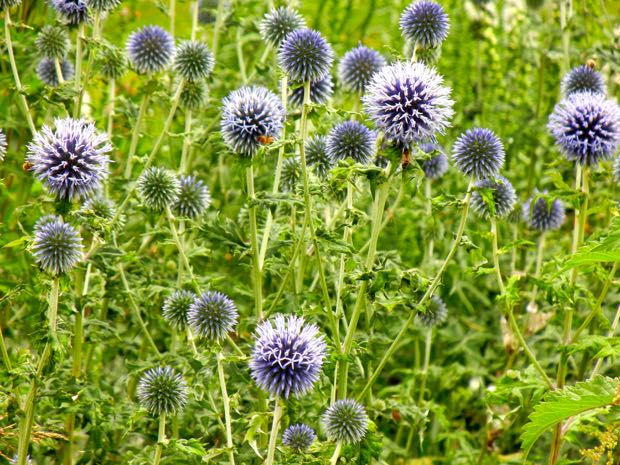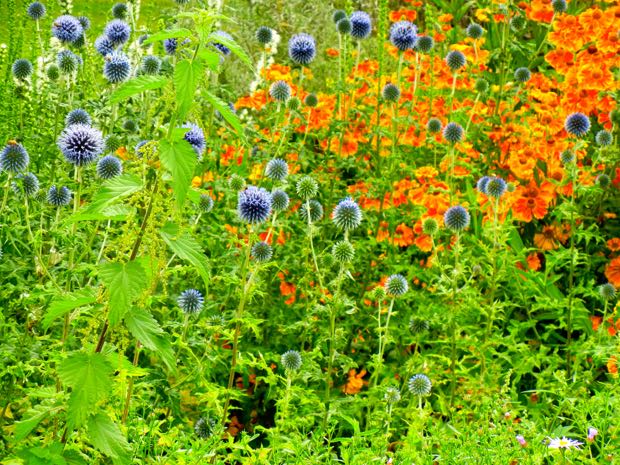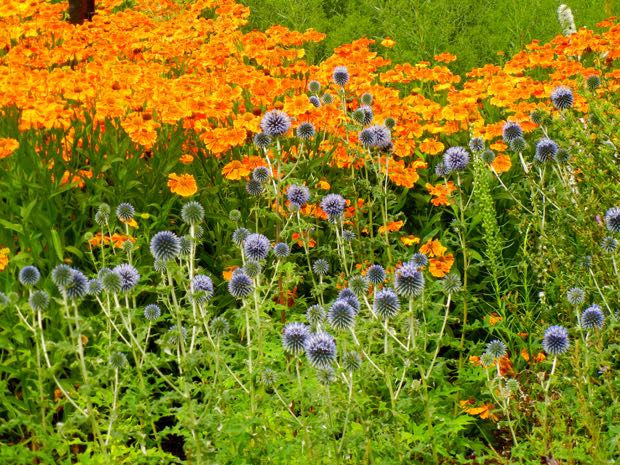Echinops ritro subsp. ruthenicus: The Ruthenian Globe Thistle
Background and Characteristics: Echinops ritro subsp. ruthenicus, also known as Echinops ruthenicus or Ruthenian Globe Thistle, belongs to the Asteraceae family of plants. This herbaceous perennial is native to Central and Eastern Europe as well as Western and Central Asia. It features striking blue-violet, globe-shaped flowers that bloom in late summer. The plant grows to a height of approximately 1m or 3ft and is characterized by lobed, thistle-like leaves with a whitish underside. The name “Echinops” is derived from the Greek words “echinos,” meaning hedgehog, and “ops,” meaning appearance, alluding to the flower’s unique shape.
How to Grow Echinops ritro subsp. ruthenicus:
Choose a Location: Echinops ritro subsp. ruthenicus thrives in full sun and well-drained soil. While it can tolerate partial shade, it performs best when exposed to ample sunlight. The soil should have a slightly alkaline pH ranging from 7.0 to 7.5.
Planting: Plant Echinops ritro subsp. ruthenicus in either spring or fall. Dig a hole that is twice as wide and deep as the root ball, and amend the soil with compost or manure. Place the plant in the hole and backfill it with soil. Ensure thorough watering.
Watering: Regular watering, especially during the first year after planting, is crucial for Echinops ritro subsp. ruthenicus. Water deeply once a week, or more frequently during hot and dry weather. Once the plant becomes established, it exhibits increased drought tolerance. However, it still benefits from occasional deep soakings during prolonged dry spells.
Fertilizing: Echinops ritro subsp. ruthenicus does not demand excessive fertilizer. Applying a light application of a balanced fertilizer in the spring can support optimal flowering.
Pests and Diseases: This plant species is generally resistant to pests and diseases. However, aphids can pose a threat and cause damage to the leaves. In case of aphid infestation, it is advisable to wash the leaves with soapy water. Alternatively, an insecticidal soap can be used, ensuring careful adherence to the instructions on the label.
Propagation:
Echinops ritro subsp. ruthenicus can be propagated through either seed or division. The division is the more commonly employed method, usually performed in autumn. By carefully digging up the plant, separating the roots, and replanting them in a new location, successful division can be achieved. Seeds can be sown either in spring or fall.
Hardiness: Echinops ritro subsp. ruthenicus exhibits hardiness in USDA zones 4 to 9, enabling it to endure winter temperatures as low as -20 degrees Fahrenheit (-29 degrees Celsius).
Echinops ritro subsp. ruthenicus is a relatively low-maintenance plant, as it possesses drought tolerance once established and does not heavily rely on fertilizers. Its vibrant blue-violet flowers and distinctive foliage make it an attractive addition to gardens, borders, or informal landscapes. With proper care and attention, you can enjoy the beauty of Echinops ritro subsp. ruthenicus and appreciate its unique hedgehog-like appearance.






